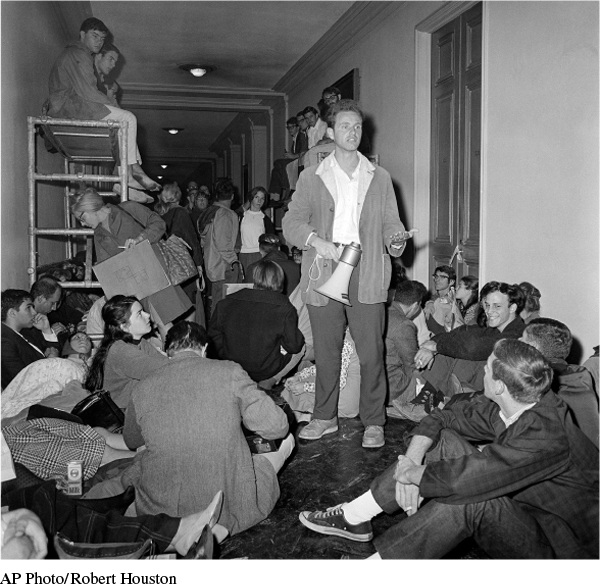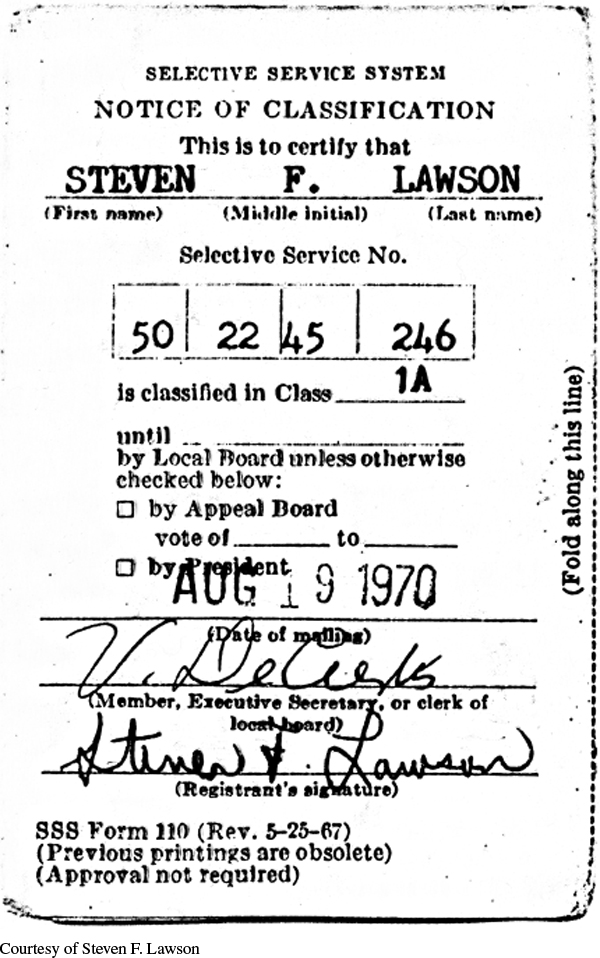The New Left
The civil rights movement had inspired many young people to activism. Combining ideals of freedom, equality, and community with direct-action protest, civil rights activists offered a model for those seeking to address a variety of problems, including the threat of nuclear devastation, the loss of individual autonomy in a corporate society, racism, poverty, sexism, and environmental degradation. The formation of SNCC in 1960 illuminated the possibilities for personal and social transformation and offered a movement culture founded on democracy.
Tom Hayden helped apply the ideals of SNCC to predominantly white college campuses. After spending the summer of 1961 registering voters in Mississippi and Georgia, the University of Michigan graduate student returned to campus eager to recruit like-minded students who questioned America’s commitment to democracy.
Hayden became an influential leader of the Students for a Democratic Society (SDS), which advocated the formation of a “New Left.” They considered the “Old Left,” which revolved around the Communist Party, as autocratic and no longer relevant. “We are people of this generation,” SDS proclaimed, “bred in at least modest comfort, housed now in universities, looking uncomfortably to the world we inherit.” In its Port Huron Statement (1962), SDS condemned mainstream liberal politics, Cold War foreign policy, racism, and research-oriented universities that cared little for their undergraduates. It called for the adoption of “participatory democracy,” which would return power to the people.

The New Left never consisted of one central organization; after all, many protesters challenged the very idea of centralized authority. In fact, SDS did not initiate the New Left’s most dramatic early protest. In 1964 the University of California at Berkeley banned political activities just outside the main campus entrance in response to CORE protests against racial bias in local hiring. When CORE defied the prohibition, campus police arrested its leader, prompting a massive student uprising. Student activists then formed the Free Speech Movement (FSM), which held rallies in front of the administration building, culminating in a nonviolent, civil rights–style sit-in. When California governor Edmund “Pat” Brown dispatched state and county police to evict the demonstrators, students and faculty joined in protest and forced the university administration to yield to FSM’s demands for amnesty and reform. By the end of the decade, hundreds of demonstrations had erupted on campuses throughout the nation.
The Vietnam War accelerated student radicalism, and college campuses provided a strategic setting for antiwar activities. Like most Americans in the mid-1960s, undergraduates had only a dim awareness of U.S. activity in Vietnam. Yet all college men were eligible for the draft once they graduated and lost their student deferment. As more troops were sent to Vietnam, student concern intensified.

Protests escalated in 1966 when President Johnson authorized an additional 250,000-troop buildup in Vietnam. With induction into the military a looming possibility, student protesters launched a variety of campaigns and demonstrations. Others resisted the draft by fleeing to Canada, and still others engaged in various forms of civil disobedience. Most college students, however, were not activists—between 1965 and 1968, only 20 percent of college students attended demonstrations. Nevertheless, the activist minority received extensive media attention and helped raise awareness about the difficulty of waging the Vietnam War abroad and maintaining domestic tranquility at home.
By the end of 1967, as the number of troops in Vietnam approached half a million, protests increased. Antiwar sentiment had spread to faculty, artists, writers, business-people, and elected officials. In April Martin Luther King Jr. delivered a powerful antiwar address at Riverside Church in New York City. “The world now demands,” King declared, “that we admit that we have been wrong from the beginning of our adventure in Vietnam, that we have been detrimental to the life of the Vietnamese people.” As protests spread and the government clamped down on dissenters, some activists substituted armed struggle for nonviolence. SDS split into factions, with the most prominent of them, the Weathermen, going underground and adopting violent tactics.
Exploring American HistoriesPrinted Page 876
Exploring American Histories Value EditionPrinted Page 649
Chapter Timeline